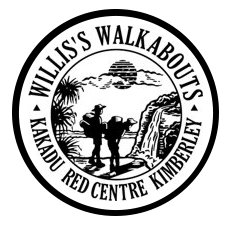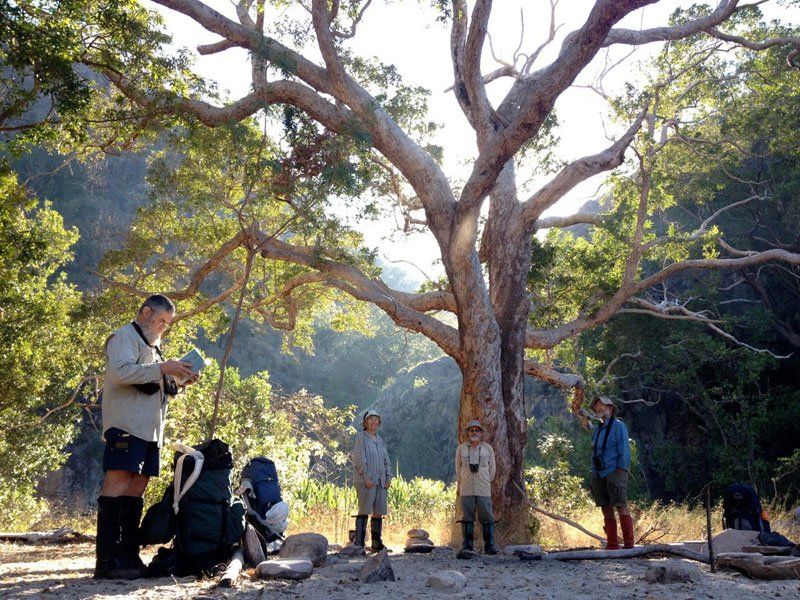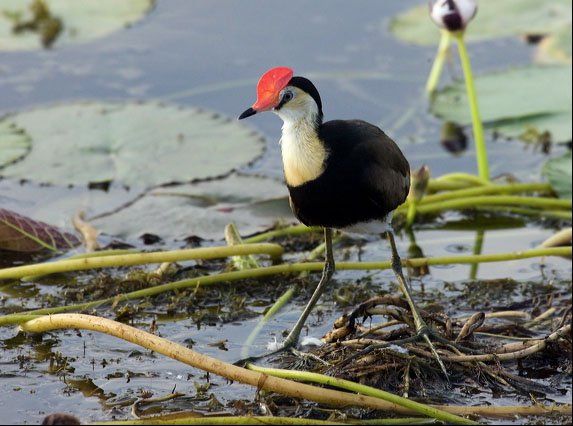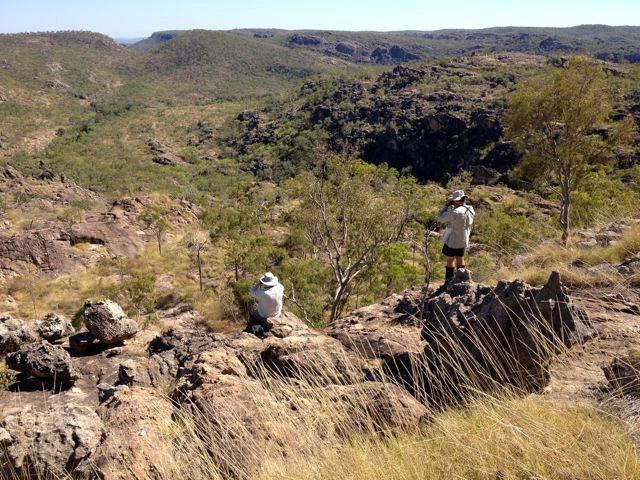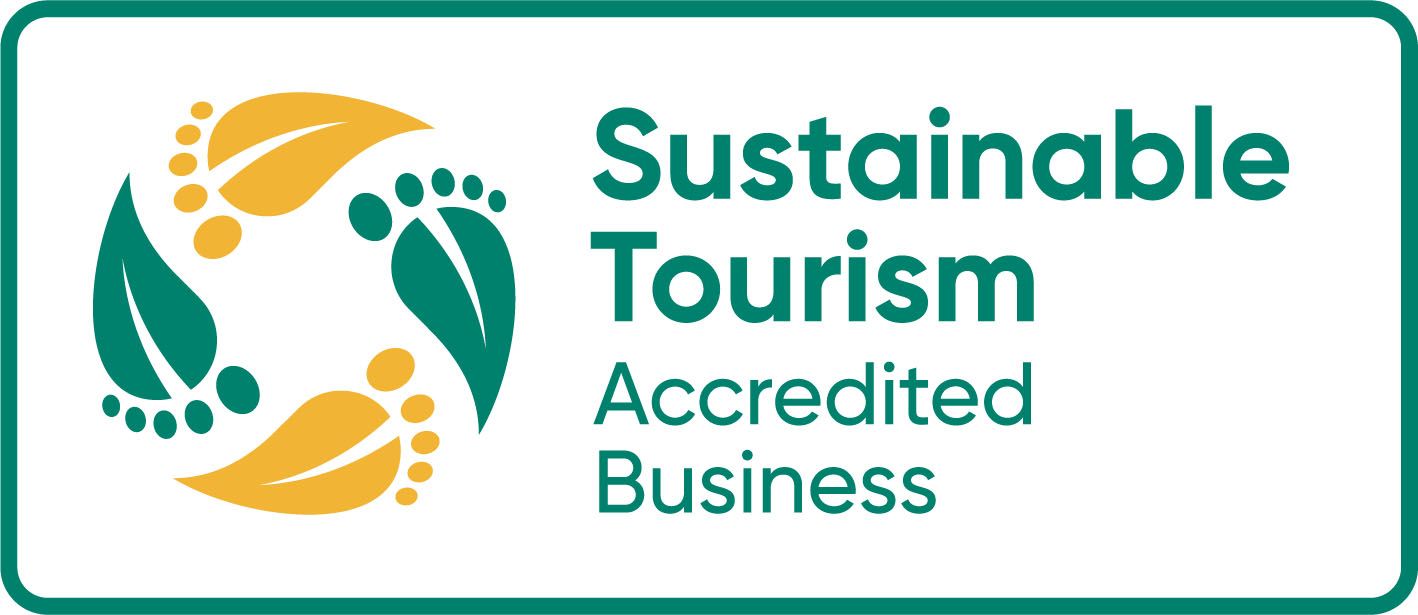EXPERIENCES / KAKADU
Kakadu & Top End Birdwatching & Nature Special
Overview
- A mix of day walks and overnight accommodation with extended walks to try and find birds which cannot be spotted near the roads.
- The Top End is a hotspot for birds with more than 350 species recorded, six endemic to the region and many Australian endemics.
- We will see a variety of the relatively common birds that inhabit the area and, with luck, will spot some of the rare ones like the White Throated Grasswren.
- While this is primarily a birdwatching trip, it is also a nature trip and a bushwalking trip. You will carry a full pack for a week on the main walk. This is the only way we can get you to some of the areas where the birds are most likely to be found.
- If you are uninterested in looking at the rest of the environment and doing a lot more than tick off a list of species, this trip is not for you.
One of the participants in our 2020 trip wrote a report about the trip for her bushwalking club. You can see it here.
Here is a link to a pamphlet about birdwatching put out by Tourism NT.
The first two days of the trip are a relatively easy introduction to birding in the Top End. This gives you some time to acclimatise as well as giving you the chance to see some of the special birds around Darwin. These include Chestnut Rail, Little Kingfisher, Rainbow Pitta, Large Tailed Nightjar and Rufous Owl to name a few. In the morning, your guide picks you up from your accommodation and takes you to a variety of good birdwatching spots close to town. In the evening, you return to your hotel.
Places we visit include Darwin Botanical Gardens, Casuarina Coastal Reserve, Lee Point, Holmes Jungle Nature Reserve and Howard Springs Nature Reserve. There are many species available at these locations, details in the trip notes.
On the third day, you are picked up early and head bush for the main part of the trip, driving south along the Stuart Highway toward Pine Creek where you will spend some time looking for the hooded parrot before heading toward Kakadu. stopping along the way at any place that looks as if it might be good for birds as yet unseen. You spend that night in accommodation in Pine Creek
Early the next morning you head toward Yurmikmik and Kambolgie for more day walks. We spend the night in one of the Kakadu campgrounds.
We can’t guarantee what you will see but this time of year gives you an excellent chance to see many special birds.
After another short walk or two, we drive to Maguk, don our packs and begin the main walk.
Our first night’s campsite is only a short walk from the top of Maguk, so we have plenty of time.
The walk is a five night loop walk up and back along Barramundi Creek.
While we have seen the white-throated grasswren on some trips in this area, excessive burning means that the traditional area to see this bird no longer provides suitable habitat for the bird which requires old spinifex and rocks.
After a final look at whatever may be nearby on the final morning, you return to the vehicle and head for Cooinda.
Cooinda is home to the famous Yellow Waters Cruise. One of our clients counted more than 40 different species on one cruise alone.
We plan to maximise your chances by doing both the afternoon and early morning cruises, the two best ones for spotting birds. This trip is the best way to get close to many birds and safely close to salt water crocodiles.
From Cooinda, we drive to Kubara and follow the 3 km walking track to a dense patch of monsoon forest where we spend the rest of the day relaxing and looking for forest birds.
Even though we will be starting our return to Darwin the trip is not winding down with several more short walks and more target birds still to come. We will stop at wetlands along the way including the well known Fogg Dam for some good birding.
Details
DATES
6-19
Oct PRICES
Full price: A$4395
Additional expenses apply. See trip notes for details.
GROUP SIZE
4 - 12 guests
CAMP SITE
Mix of sand and rock ledges. One site may be on a pebble beach. Most sites are excellent. You are unlikely to see anyone else at most of the campsites on the long walk.
ART
We visit a variety of art sites
SWIMMING
Swimming is excellent in most areas but may not be possible at one of the camp sites.
WILDLIFE
Birds, birds and more birds. The Yellow Waters cruise is excellent for birds, many of which you are unlikely to see on the other parts of the trip. It also gives you a good chance to see large estuarine crocodiles. With most birds concentrated near the waterholes at this time of year, your chances of seeing some of the rare ones are better than when they are more spread out.
CLIMATE
October is hot. The average daily maximum temperature is 36-37ºC (about 97-99ºF). Fortunately, the average nightly minimum is cooler at about 21-23°C (70-73°F). As the minimum temperatures have been known to drop below 15ºC (about 60ºF), we recommend bringing a lightweight sleeping bag. (Some people do, however, choose to replace their sleeping bag with thermals.) As long as we get an early start in the mornings, we should have plenty of time to rest during the hottest part of the day.
Rain is possible so we recommend bringing something to use as a shelter if we get a rain storm.
COOKING
We will have campfires every night on the long walk and hot water available every morning.
WALK RATING - MODERATE
Terrain
The terrain ranges from open woodland to narrow rainforest gorges. Parts are flat and easy. Other parts require scrambling over river stones of a variety of sizes. There are a few steep, but short climbs. You walk through almost every type of terrain that it is possible to find in Kakadu.
Vegetation
Much of the walking is through relatively flat, open woodland with a grassy understorey. Some short sections of grass may hide a broken rocky surface where you will have to be particularly careful. There may be some slow sections where you will have to pass though thick scrub. The vegetation can vary from year to year depending on when last burnt. At this time of year, the spear grass has finished seeding and dried out. There will be some sections of monsoon forest but little of this will be with full packs.
Distance
With packs, generally 4-6 hours. A few days might be longer, some shorter. This trip is designed to maximise the time you have to sit and watch the birds.
Pack Weight
You need to carry up to 6 days of food.
Itinerary
*This itinerary is subject to change
For several weeks at the end of the Dry (Kurrung) and beginning of the Build Up (Kunumeleng), the Mamukala billabong in Kakadu becomes home to tens of thousands of birds. The video clip here gives you a tiny taste of what it’s like. This is one of many places we will visit on this trip.
